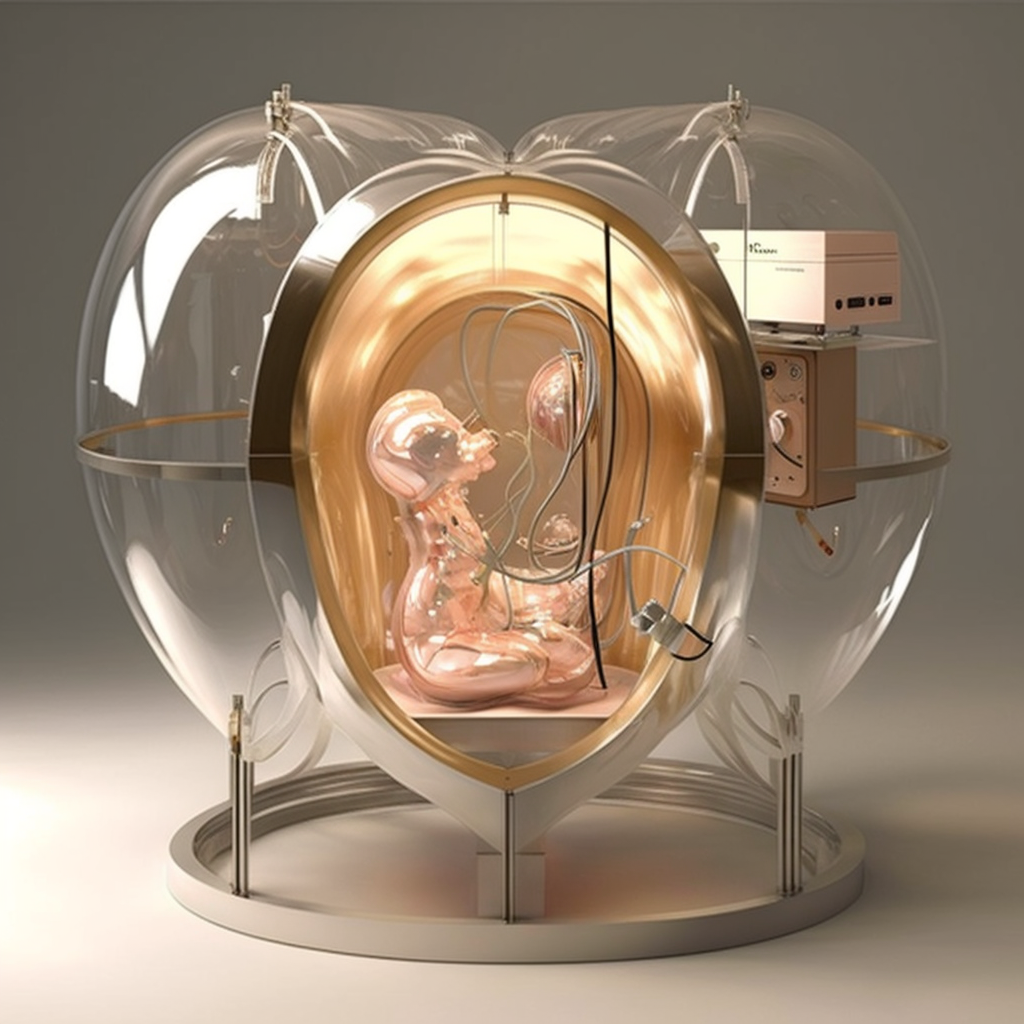Dr Andy Darby, Research Associate in Speculative Design, The Future of Human Reproduction programme
This exhibition showcases a series of speculative design artefacts exploring the concept of complete ectogenesis. Complete ectogenesis refers to the conception, embryonic development and gestation of a fetus wholly outside of the human body in an artificial womb environment. It will be an idea familiar to readers of Aldous Huxley’s Brave New World and to viewers of The Matrix.
Complete ectogenesis is not yet possible. However, current scientific research is exploring partial ectogenesis: the transfer of a fetus from the maternal womb to an artificial womb to continue gestation. The aim of this research is to find more effective treatments for extremely premature infants but it could pave the way, in the distant future, for complete ectogenesis – opening up radical new possibilities for the ways in which future children are created and born.
Members of The Future of Human Reproduction team worked with design researcher, Dr Andy Darby, to create speculative artefacts that act as discursive prompts to consider the implications of a future where complete ectogenesis is technologically feasible. These speculative artefacts are presented through the fictional Museum of Human Reproduction and gathered together as a retrospective exhibition entitled Complete Ectogenesis 2156.
The Future of Human Reproduction is an interdisciplinary research programme, which is exploring the cultural, ethical, legal, and social challenges that will emerge as technological advances fundamentally change the possibilities for human reproduction. It is funded by the Wellcome Trust under grant reference 222858/Z/21/Z.
For more information visit: https://wp.lancs.ac.uk/futureofhumanreproduction/




